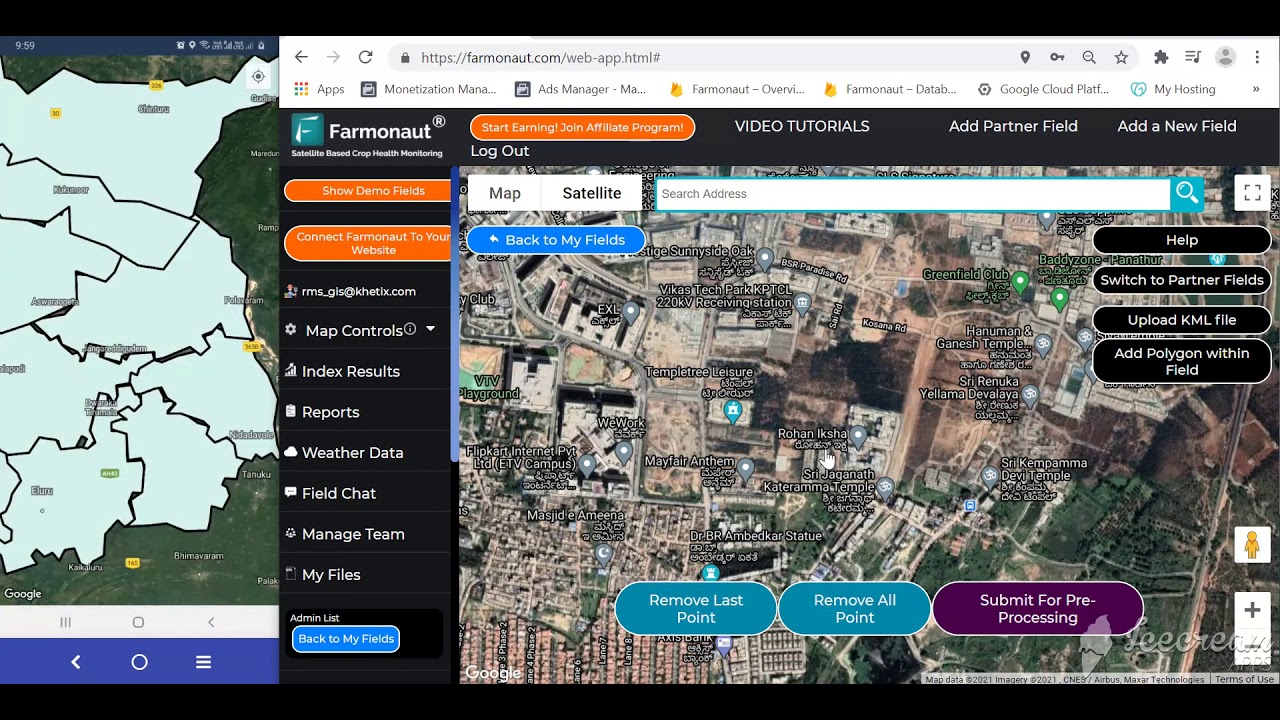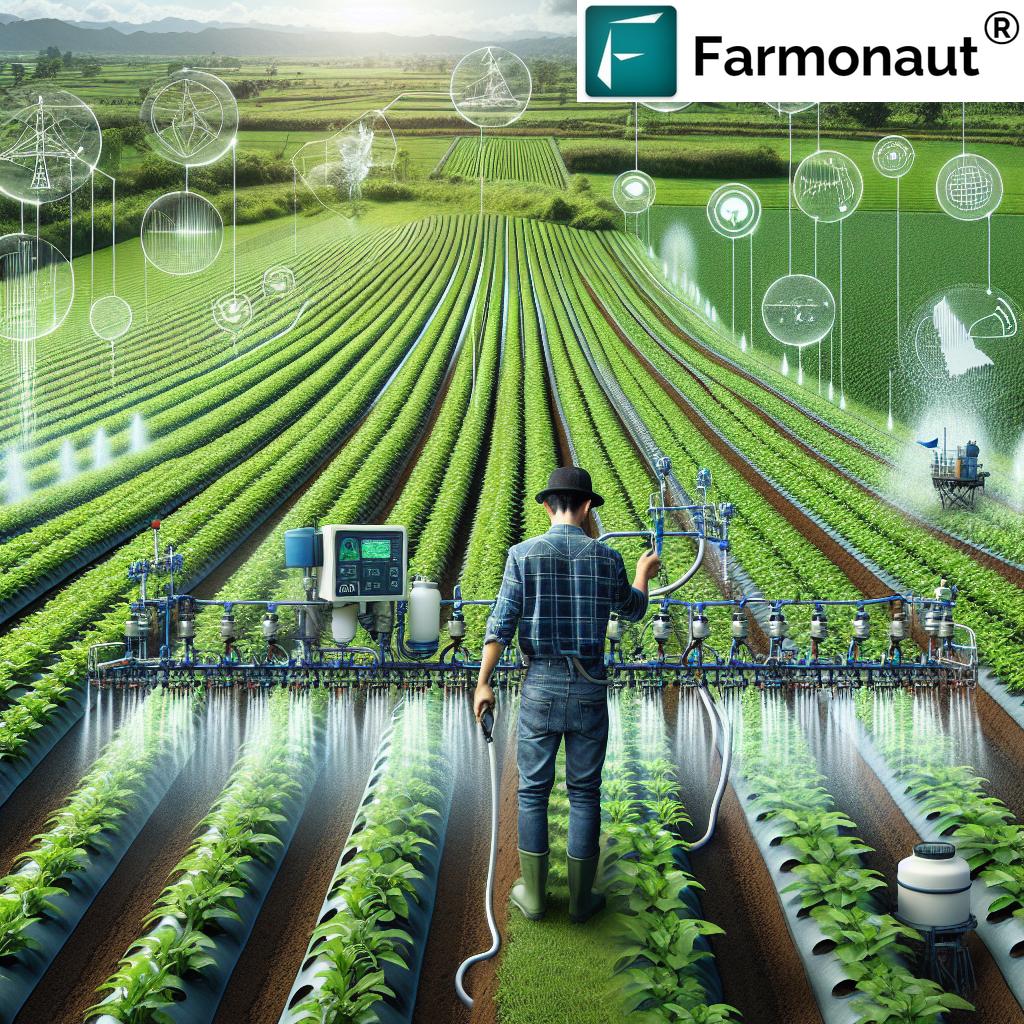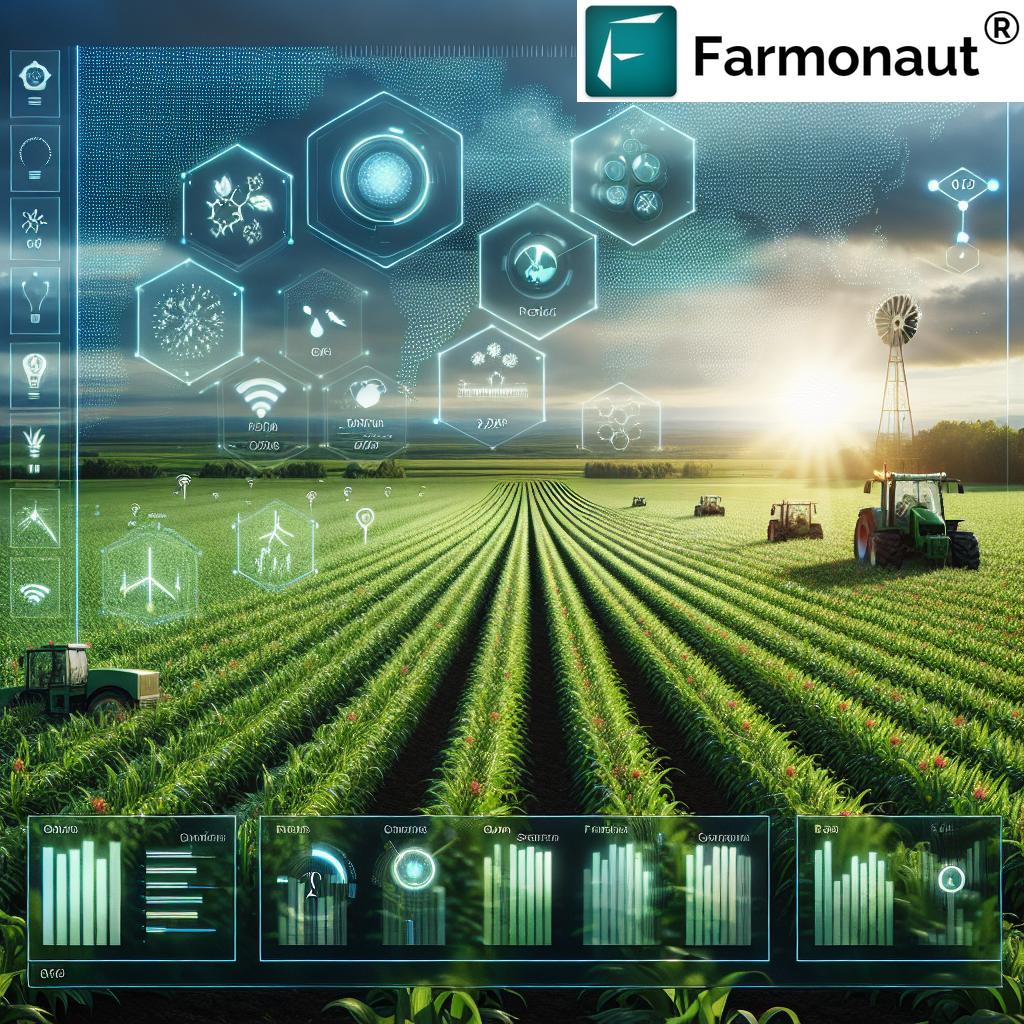How Agricultural Machinery Improves Cultivation Efficiency: Technology, Precision, and Sustainable Growth
“Modern tractors can cover up to 20 acres per hour, increasing fieldwork speed by nearly 50% compared to manual labor.”
Introduction: The Evolution of Agriculture
Modern agricultural machinery has fundamentally changed what is possible in farming and crop cultivation. From automating labor-intensive tasks to boosting productivity and minimizing resource waste, the mechanization of agriculture means that today’s farmers can achieve levels of efficiency, uniformity, and sustainability that were unimaginable just generations ago.
By integrating precision agriculture technologies, GPS-guided equipment, automated systems, and data-driven farm management, we are witnessing a dramatic transformation in how we manage the soil, labor, and resources essential for efficient field operations. These advancements not only lead to higher crop yields and better quality but also foster sustainable farming practices, reducing environmental impact and supporting long-term farm health.
In this detailed guide, we will explore the historical journey of farming machines, examine measurable improvements in speed, accuracy, and sustainability, and consider both the opportunities and challenges inherent in integrating high-tech equipment into modern farming practices.
Historical Evolution of Agricultural Machinery
The history of agricultural machinery is a story of constant innovation. The earliest wave of mechanization began in earnest with the invention of the combine harvester in the early 20th century — a machine capable of reaping, threshing, and gathering grain crops in a single pass. This marked a pivotal shift, drastically reducing the labor needed for harvesting and increasing the area a single farmer could manage.
As the decades passed, tractors, plows, and a growing array of implements (from planters to sprayers and tillage tools) spread rapidly across farmlands. Tractors replaced animal-drawn ploughs, exponentially increasing speed and efficiency — as much as tenfold over traditional methods.
By the mid-20th century, continuous development led to more specialized and powerful machines. Each advancement in machinery brought us closer to systematizing field management: seed placement became more precise, chemical application more targeted, and soil preparation more reliable.
- Combine Harvester: Revolutionized grain crop collection, combining reaping, threshing, and winnowing.
- Tractors: Foundation of mechanized farms, powering a range of implements for diverse tasks like plowing, planting, and transport.
- Planters and Seeders: Enhancing row spacing and seed placement accuracy, paving the way for crop productivity improvement.
Today, we continue to see rapid adoption of automated systems, AI-driven solutions, and precision GPS technology — bringing new intelligence and accuracy to age-old agricultural challenges.
Enhancing Productivity and Efficiency through Mechanization
We have witnessed remarkable increases in productivity thanks to modern agricultural machinery. Tractors, for example, complete field operations up to 10 times faster than animal-drawn implements, ensuring more land can be cultivated within optimal planting windows for maximum yields (source).
GPS-guided machinery offers precision row spacing and extraordinarily accurate seed placement—achieving up to 98% planting accuracy and typically reducing seed waste by 15%.
- Combines multi-tasking into single-pass efficiency: e.g., reaping, separating, and collecting grains at once.
- Tractors and planters increase acreage covered per day, expanding the scalability of farming operations.
- Precision seeders ensure uniform emergence, boosting crop quality and marketability.
The outcome? Crop productivity improvement and more reliable harvests. This progress reduces the risks linked to narrow planting/harvesting windows and variable weather — issues that have always challenged farmers worldwide.
“Precision seeders can reduce seed wastage by up to 15%, ensuring more uniform crop emergence and higher yields.”
Comparative Table: The Impact of Agricultural Machinery on Efficiency
| Machinery Type | Main Function | Estimated Labor Reduction (%) | Estimated Time Saved (%) | Impact on Crop Yield (%) | Environmental Benefit | Notable Technology Feature |
|---|---|---|---|---|---|---|
| Tractor | Plowing, towing implements, transport | 70–80% | 60–75% | 10–20% | Reduces manual energy input | GPS Guidance, Automated Steering |
| Combine Harvester | Harvesting grains (reaping, threshing, gathering) | 90–95% | 70–80% | 15–25% | Less crop residue burning | Yield Monitoring Sensors |
| Planter | Row crop planting | 70–80% | 60–70% | 10–15% | Uniform planting reduces seed waste | Variable Rate Application |
| Sprayer | Pesticide/fertilizer application | 75–90% | 65–80% | 8–12% | Reduces chemical overuse | Precision Nozzle Control |
| Precision Seeder | Exact seed placement | 80–90% | 70–80% | 15–20% | Minimizes seed/chemical waste | RTK GPS Guidance |
The Rise of Precision Agriculture Technologies for Efficient Field Operations
Precision agriculture technologies have turbocharged the benefits of mechanization. By using RTK GPS, automated steering, and advanced sensors, we have reached centimeter-level accuracy in planting, spraying, and field management (source).
- Automated steering systems prevent overlapping passes, minimizing waste and resource over-application.
- Acoustic and optical sensors guide fertilizer and pesticide application directly to the areas that need them.
- Variable rate technology enables farmers to optimize every input, customizing by soil type, crop stage, or micro-climate.
- Resource management tools (as offered by Farmonaut’s Fleet Management) allow us to allocate machinery efficiently, saving operational costs and maximizing utilization.
These tools contribute directly to outcomes such as:
- Reducing chemical usage by up to 20%, protecting environmental sustainability.
- Lowering labor requirements for routine and repetitive tasks.
- Improving crop health and consistency, evidenced by gains in uniformity, yield, and quality.
- Documentation and traceability of each field operation — benefits that can be streamlined using digital platforms like Farmonaut Traceability.
Labor and Time Savings: Automating Field Operations and Reducing Labor in Farming
One of the most significant advantages of agricultural machinery is dramatic reductions in labor costs and resource requirements. In many regions, a single combine harvester now does the work of 30–40 manual laborers at harvest time, with operational costs dropping by $200–$300 per acre (source).
Automated irrigation systems offer similar game-changing benefits:
- Water distribution efficiency increased to 90%.
- Labor needs reduced by up to 75%.
- Time savings allow farmers to monitor multiple fields and crops without constant on-site presence.
The versatility of modern machines enables us to consolidate multiple tasks. Equipment like wheel loaders can be adapted for fertilizing, plowing, planting, and harvesting—streamlining operations and reducing the necessity for highly specialized machines (source).
- Less time spent on routine tasks means more focus on strategic management and quality improvement.
- Fewer manual laborers exposed to health risks associated with heavy or repetitive agricultural work.
- Automating routine operations means consistently better execution, regardless of skill levels among seasonal staff (where still required).
Improving Crop Quality and Environmental Sustainability with Precision Machinery
Mechanized farming equipment preserves crop quality by ensuring timely planting, fertilization, and harvesting, reducing post-harvest losses caused by delays or mishandling. Precision farming machinery maintains uniform field conditions, which translates to a 25% improvement in crop uniformity and a 20% increase in marketable yield when paired with advanced sorting and grading systems (source).
- Automated grading achieves 95% accuracy in separating premium-quality produce from sub-par outputs.
- Consistent seed spacing and placement reduce competition among plants for light, water, and nutrients, further enhancing overall yield and quality.
From a sustainability perspective, precision spraying equipment and variable rate application have enabled us to decrease chemical usage by up to 20% (source). Targeted application reduces run-off, simplifies compliance with environmental regulations, and protects beneficial insects and broader soil health.
- Efficient irrigation systems (Farmonaut Crop Plantation & Forest Advisory) conserve water and reduce energy costs, further lessening our ecological footprint.
- Monitoring carbon footprint with tools like Farmonaut Carbon Footprinting helps track supply chain impact and make targeted improvements for sustainable farming practices.
Farmonaut’s Role in Optimizing Cultivation Efficiency with Data and Satellite Tech
As precision agriculture enters the digital era, integrated data solutions are just as critical as physical machinery. At Farmonaut, we empower farmers, agribusinesses, and government agencies with
technology that advances efficient field operations and resource management:
- Satellite-based crop health monitoring: Multispectral satellite images reveal real-time crop health status (NDVI), soil moisture, and more, supporting decision-making for irrigation, fertilizer, and pest management.
- Large Scale Farm Management: Enables operational oversight and resource allocation for larger farming operations — from field mapping to compliance and cost tracking.
- Jeevn AI Advisory System: Real-time, AI-driven insights on crop management, weather, and best practices, giving us the tools to respond proactively to observed field changes.
- Product Traceability via Blockchain: Enhances transparency and accountability in the supply chain, which is particularly vital for specialty crops, food safety, and meeting international standards — see Farmonaut Traceability.
- Fleet & Resource Management: Optimizes machinery usage, scheduling, and maintenance — minimizing idle time and operational costs while maximizing field coverage. Explore our Fleet Management tools.
- Crop Loan & Insurance: Supporting financial inclusion with satellite-based verification for loans and risk evaluations. Detailed info on our Crop Loan and Insurance support.
- Carbon Footprinting: Track, report, and reduce environmental impact, unlocking opportunities for sustainable branding and global market access. Learn more at Farmonaut Carbon Footprinting.
The blend of real-time monitoring, AI-driven advisories, and digital resource management amplifies the efficiency gains delivered by modern machinery — facilitating continuous, data-backed improvement in every stage of field operations.
Challenges and Considerations: Mitigating Soil Compaction, Managing Machinery, and Sustainability
Despite the many advantages of mechanization, heavy equipment introduces new challenges. Soil compaction is the most widely acknowledged — impacting soil structure, reducing aeration, and creating barriers for root growth.
- Compacted soil leads to poorer drainage, lower yields, and greater runoff of agrochemicals.
- Persistent compaction can require additional tillage, offsetting some time and cost savings.
Soil compaction mitigation strategies are crucial for keeping these risks in check:
- Controlled traffic farming: Machinery is confined to fixed tracks, reducing the area of the field exposed to compaction (source).
- Automated tillage systems: Combine precision measurement tools with intelligent soil management for improved long-term soil health (source).
- Minimizing passes and using lighter machinery where practical — facilitated by smart fleet management planning.
We must balance the immediate gains of labour-saving machines with strategies to support sustainable farming practices, ensuring both higher yields and healthy soils for the next generation.
Frequently Asked Questions (FAQ) on Agricultural Machinery and Cultivation Efficiency
-
Q: How does agricultural machinery impact farm productivity?
A: Machinery automates and accelerates key field operations, allowing us to cultivate larger areas with greater accuracy and reduced waste. This results in higher crop yields and improved efficiency across all farm tasks. -
Q: Is precision agriculture worth the investment for small and medium farms?
A: Yes! Precision agriculture technologies aren’t limited to large-scale farms. Solutions like Farmonaut’s real-time monitoring and resource management make advanced analytics and data available at affordable price points for any operator. -
Q: Can excessive machinery use harm soil health?
A: Heavy machinery can cause soil compaction if used indiscriminately. However, with soil compaction mitigation techniques such as controlled traffic, automated tillage, and data-guided machinery use (like those tracked by Farmonaut), these risks can be managed. -
Q: What environmental benefits result from mechanization and precision technology?
A: Precise machinery enables optimal chemical and water usage, reducing waste, avoiding overapplication, and minimizing ecological impact. Resource management tools and carbon footprint tracking further aid in transparent, sustainable farm management. -
Q: How can farmers implement traceability and resource management for compliance?
A: Tools like Farmonaut’s traceability platform and fleet/resource management modules provide seamless compliance, record-keeping, and real-time field intelligence essential for meeting food safety and sustainability requirements.
Conclusion: The Future of Efficient and Sustainable Farming
The integration of agricultural machinery and precision agriculture technologies has not only elevated the efficiency, speed, and consistency of modern farming practices but also expanded our capacity to operate sustainably. By embracing automation, digital tools, and data-driven insights, farmers worldwide can enhance productivity, minimize resource usage, and pave the way for more resilient and profitable agricultural systems.
With platforms like Farmonaut, we make these advances truly accessible: delivering satellite-driven advisories, AI-based management, blockchain traceability, and comprehensive farm analytics in a cost-effective modality suitable for any operation, anywhere on the globe.
The path forward is clear — by aligning machinery investments, data platforms, and sustainable practices, we secure not just short-term gains but the long-term health and success of agriculture as the world’s cornerstone industry.






















